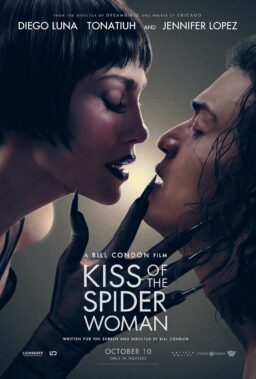or: Ways to Fall (in one or more pieces)
The first part of this little movie provides an overview of different approaches filmmakers from Buster Keaton to Alfred Hitchcock to Christopher Nolan have taken to shooting falls and/or jumps from high places. (It wouldn’t do anyone much good to fall or jump from a low place.) The second part examines, in vital but nit-picky detail, a twelve-shot sequence from “The Dark Knight” and makes suggestions for improving it, based solely on what’s already there.
TWO WARNINGS: Part I includes possible spoilers for “In Bruges” (two reminders of what makes it one of the best-directed films of the year), “The Fall,” “The Tenant” and “Infernal Affairs” — as well as not-so-spoily clips from “Vertigo,” “Superman,” “This Gun for Hire,” “Our Hospitality” and “The Dark Knight.” Some parts are a little gruesome, too. Part II delves into a brief segment of “The Dark Knight” repeatedly, shot by shot. If that places unreasonable demands on your time or patience, you’re at the wrong place on the Interwebs, so don’t subject yourself to it. There’s a little button at the lower left of the movie player that will stop it. You have been warned (and will be again).
Some notes about falling down:
Part I
“This Gun for Hire” — This could have been shown in a one shot, since the height, jump, and landing take place in a single take. But I wanted to include the train-top angle on Alan Ladd before we cut to the stunt man.
“In Bruges” (1) — A variation on the previous sequence. It’s really nicely done, the way the camera looks past Colin Farrell as he opens the window and we see the boat in the canal at the same time he does. Again, the jump and the landing are in one shot.
“The Tenant“ — Polanski accomplishes everything in one spectacular shot, beginning from below the window, climbing above it and tilting vertiginously downward, bringing Simone Chule’s toes back into the shot before she jumps. (That is Polanski himself, in drag, in the first part of the crane shot.) The second, slow-motion shot is a good example of the technique of having someone fall into the camera. What you see here is preceded by a long take in which the other tenants gather in opera boxes to applaud the suicidal jump, and it’s followed by an incredible one-shot coda of Simone’s broken body on the ground, and other tenants’ responses, but I cut them for this context because they’re just too ovewhelming. And the movie itself just keeps getting weirder from there…
“In Bruges” (2) — Not only is this beautifully set up visually (the dolly back from the tower, with its tip in the clouds), the use of sound as a man drops coins on the people below (an association from earlier in the film) is equally spectacular. Writer-director McDonagh tautly weaves together three dramas: the lovers at the outdoor cafe, the passers-by distracted by the falling, tinkling coins… and the inexorable logic and determination of the man standing atop it all. Chilling use of the POV plummet, the rack focus landing, and a gut-wrenching reaction shot. I have to say it: Nothing in “The Dark Knight” approaches this level of visceral and emotional impact, because the reequisite command and fluency with the medium is sorely lacking. Which makes “TDK” look like a large-scale student film next to these other movies.
“Vertigo“ — James Stewart is left hanging during the first appearance of the famous “Vertigo” shot. This brilliantly crafted prologue keeps us off-balance for the whole rest of the movie, expertly playing Scotty’s terror and helplessness off the peril of the cop who tries to rescue him. This sequence is built around patterns of three: three men; three jumps; three spaces — above, below and in-between.
“Infernal Affairs“ — Martin Scorsese botched the equivalent of this moment in his remake, “The Departed,” by telegraphing it. We don’t know what’s happening, above or below, until the character on the ground does.
“Our Hospitality” — One of the masterful Buster Keaton gags, showing absolute respect for the integrity of the shot. (Buster is near the bottom of the frame in the first shot.) Yes, it’s a mixture of outdoor sets and real locations (and dummies in the actual fall, seen from directly above), but no matter how you look at it, it’s a long way down! You may recognize the startlingly funny demonstration of the laws of gravity from Wile E. Coyote and James Cameron’s “The Abyss.”
“Superman“ — The inspired choice here is to shoot the “landing” in one stationary shot, with Lois “falling” on the left of the frame and Superman swooping in to scoop her up in the background and then on the right. Technology may have improved since 1978, but imagination hasn’t.
“The Dark Knight“ — Actually, the best parts of this sequence are the shots of Rachel sliding down the roof and Batman leaping through the broken window to scoot after her. After that it’s all… downhill. I feel the momentum of the sequence is broken by the cutaways to close-ups of Rachel/Batman and the two mysterious shots of the cab driver upon whose vehicle they are destined to land. There’s no payoff to the driver’s cameo, so why include him. Also, the shot of the actual impact is too close to the same angle of the falling shot before it. Unfurled Batwings partially disguise the cut between them, but (to me) the effect was like following somebody plummeting from the sky, only to film their landing by shooting them jumping off a curb. An overhead angle (“Vertigo“), a below-the body angle (“The Tenant“), a toward-the-street angle (“Infernal Affairs“) — any of these would have been more effective, in my opinion.
“The Fall“ — The title as filmmaking punch-line, circa 1915. A stunt man sees the result of his bone-crushing work. And it doesn’t cut together (see previous clip).
Part II
See paragraph on “The Dark Knight,” above. Or don’t, if it will waste your time, offend you, and/or retroactively reduce your enjoyment of Christopher Nolan’s film, which is being re-released nationwide in IMAX Friday. If you want to see one moviegoer’s point of view (based on a gut reaction upon first viewing the movie, confirmed by closer examination), then fine. There are arguments to be made for and against the way this sequence has been assembled. We can only imagine what was in the raw footage the filmmakers had to work with, but it might have been breathtaking in the right hands.










